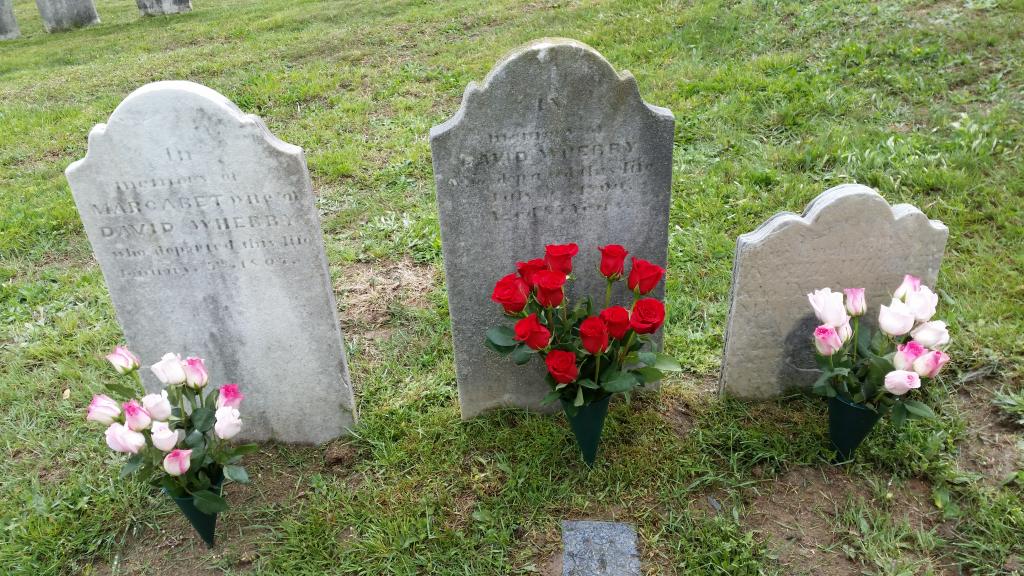David WHARRY/WHERRY Sr
SAR Patriot #:
P-317635
The following information was assembled from numerous sources and cannot be used directly as proof of Qualifying Service or Lineage.
It is considered a research aid and is intended to assist in locating sources that can be used as proof.
State of Service: PA
Qualifying Service: Patriotic Service
DAR #: A123666
Birth: 1717 / / Ireland
Death: 07 Jul 1800 / Chester / PA
Qualifying Service Description:
- APPOINTED TO AID DISTRESSED FAMILIES OF CHESTER CO ASSOCIATORS IN SERVICE
- Signed Oath of Allegiance
Additional References:
- Grave Registry form. National Society Sons of the American Revolution (SAR)
- Published Pennsylvania Archives, Second Series, Volume 14, pg 127, 138, 139
- Chester Co Hist Soc, Oaths of Allegiance, Chester Co, PA (1974), pg 14
- Futhey & Cope, Hist of Chester Co, PA with Gen & Bio Sketches (1981), pg 204
- Wm H Egle, M.D, PA in the War of the Rev, Assoc Battalions and Milita, Vil II, 1775-1783 (1988), pg 65
Spouse: (1) Isabelle Sharp; (2) Margaret Mackey
Children: Esther; James; Joseph; David; Ebenezer; Mackey; Jesse;
Members Who Share This Ancestor
| Date Approved | Society | ACN | SAR Member Info | Lineage via Child | View Application Detail | |
|---|---|---|---|---|---|---|
| 1983-03-08 | OH | Unassigned | Emerson Arthur Fisher (121848) | Joseph | ||
| 1983-03-31 | OH | Unassigned | Donald Arthur Fisher (122054) | Joseph | ||
| 2013-02-26 | VA | 51448 | David Edward Cook (141547) | Jesse | ||
| 2017-09-08 | TX | 77083 | Cullen Mark Malone (204495) | Mackey | ||
| 2017-09-22 | MD | 77306 | John Michael Davidson (204651) | Mackey | ||
| 2017-09-22 | MD | 77307 | Roderick Mark Davidson (204652) | Mackey | ||
| 2017-09-22 | MD | 77308 | John Joseph Max Davidson (204653) | Mackey | ||
| 2017-09-22 | MD | 77309 | Jacob Boone Davidson (204654) | Mackey | ||
| 2017-09-22 | MD | 77310 | Daed Nathaniel Verble (204655) | Mackey | ||
| 2017-09-22 | MD | 77311 | Ethan Wade Verble (204656) | Mackey | ||
| 2017-09-22 | MD | 77312 | Oliver Jacob Davidson (204657) | Mackey | ||
| 2017-09-22 | MD | 77313 | Finley Boone Davidson (204658) | Mackey | ||
| 2017-09-22 | MD | 77314 | Xavier Ian Verble (204659) | Mackey |
Burial:
Location:
Fair Hill / Cecil / MD / USA
Find A Grave Cemetery #:
Grave Plot #:
Section II, Lot 352, Site 12
Grave GPS Coordinates:
Find A Grave Memorial #:
Marker Type:
SAR
SAR Grave Dedication Date:
07 May 2016
Comments:
- Headstone images taken and provided with permission of Compatriot David E. Cook (VA) member 141547.
- Bio in Find-a-Grave
Directions to Cemetery / Gravesite:
Section II, Lot 352, Site 12. Enter cemetery, drive to the circle and bear right (West). Turn left at second paved roadway (South). Grave will be on right approximately 2/3 of the way up the hill


